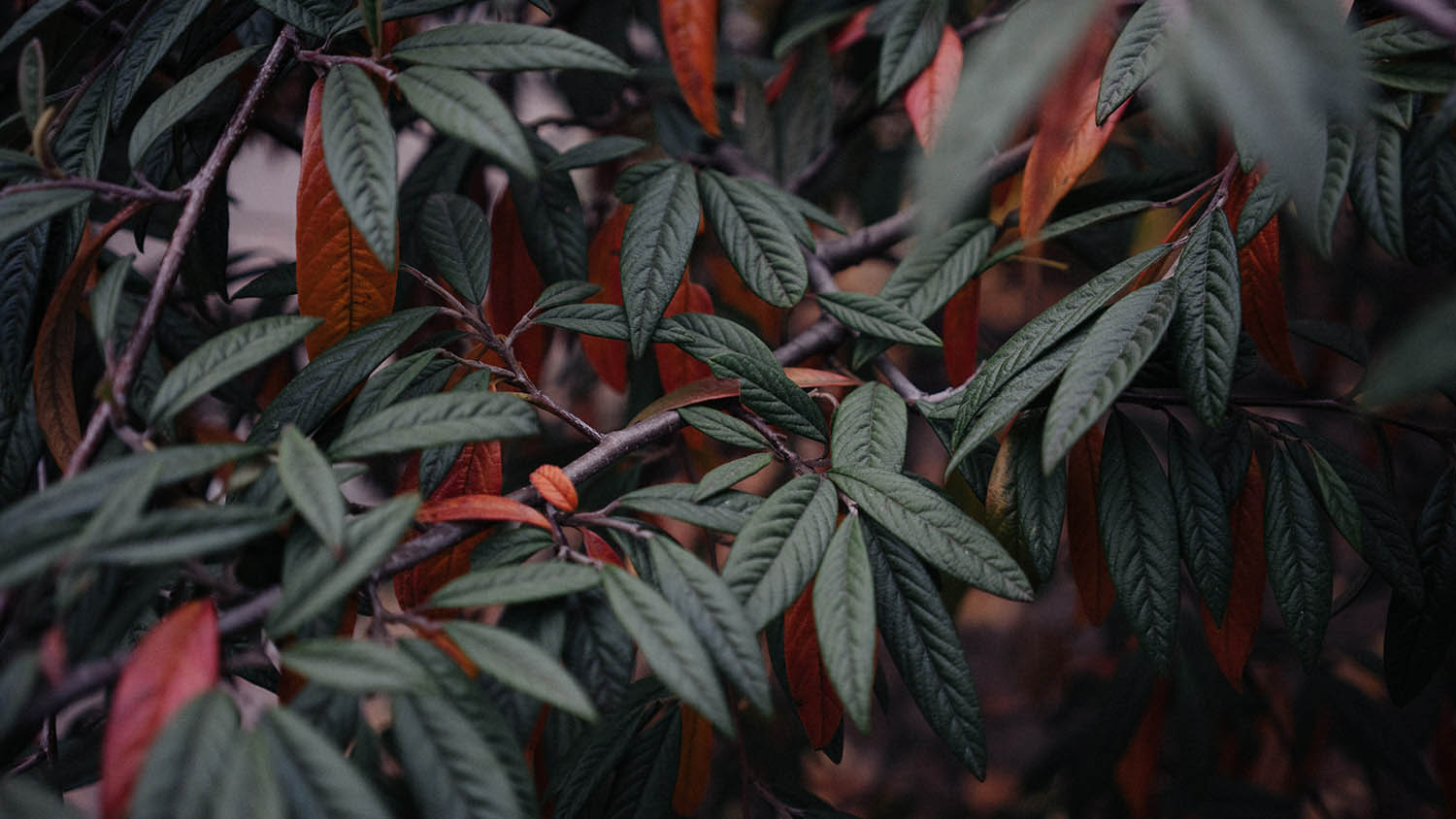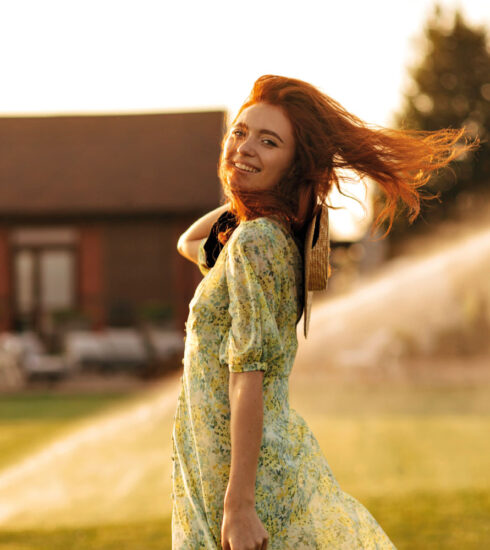Urfada İki Gün
Sabahın en taze zamanlarında adımlamaya başlıyoruz bu şehri…
Günün henüz ısıtmadığı taş yolları. Bir masal kitabından çıkmış gibi ara sokakları… Hayatların ardındaki evleri, yaşamları hayal ede ede kayboluyoruz Urfa’nın tarihi evlerinin arasında…
Şöyle bir kahvaltı ediverelim, diye çıktığımız yolda sokakları şaşırmak hoşumuza gidiyor…
Sonra kalabalıklar artmaya başlıyor.
Sokak kapılarından kadınlar, erkekler çıkıyor.
Çocuklar görüyoruz tüm neşelerini bürünmüş koşturan.
Minik ellerinde sıcak pideler taşıyorlar evlerine.
Gün ilerledikçe pide, patlıcan, kebap kokuları, yaşam sesleri artıyor gitgide.
Sabahki sakinlik yerini yoğun kalabalıklara, biraz da karmaşaya bırakıyor.
Eski çarşısında yürürken zorlanıyoruz ara ara.
Küçük dükkânlarda allı pullu kumaşlar, göz alıcı altın takılar, tespihler, süs eşyaları, ıvır kıvır şeyler görüyoruz.
Tabii bir de her köşe başında karşımıza bir ciğerci, çiğ köfteci, tatlıcı çıkıveriyor.
Yemek kokuları, insan kalabalığı derken, şehrin bu cümbüşüne bir zaman sonra biz de ayak uyduruyoruz.
Salaş bir dükkâna dalıp lavaş arasında ciğerden tadıveriyoruz.
Kasım ayında havası harika.
Ne soğuk ne sıcak.
“50 dereceyi, hatta fazlasını görüyoruz buralarda” diyor sıcakkanlı insanlarından biri.
Kime ne sorsak bunaltmayan bir ilgiyle yardımcı olmaya çalışıyorlar.
Şehrin kale surlarının dibinde kurulu eski bölgesinde hayat biraz sıra dışı…
Masalsı…
Azıcık karmaşık…
Geçmişten kalma bolca iz taşıyor.
Bize adeta eski Urfa’nın küçük bir resmini çiziyor.
Tabii, “Keşke biraz daha düzen ve temizlik olsa” diyorsunuz zaman zaman.
Belki bir dahakine böyle olur, umut ediyorum.
Bir gece ve iki gün yaşadığım Urfa’yı seviyorum…
Mezopotomya’nın bu kadim bölgesi değerleniyor gözümde, gönlümde…

Balıklıgöl
(Halil-Ül Rahman)
Hava pırıl pırıl, Güneş var…
İçinde ışıklar ve balıklar oynaşan koca bir havuz…
Etrafında insanlar…
Balıklara yem atanlar, dua edenler, dilek tutanlar.
Fotoğraf çekip ânı ölümsüzleştirenler…
“Halil-ür Rahman” da denilen, bu kocaman havuz ve balıklar kutsal sayılıyor.
Burada bir mağarada doğan ve devrin zalim hükümdarı Nemrut’a karşı gelen İbrahim Peygamber, kurulan dev mancınıklarla şu an gölün olduğu yerde yakılan kocaman bir ateşe atılarak cezalandırılır.
Sonra bir mucize olur ve ateş suya, odunlar da balıklara dönüşür.
Bu hikâyeyi daha önce okumuştum. Şimdi bir kez de buradakilerden de dinliyorum…
“Balıkların sırtındaki lekeler o zamandan kalma ” diyorlar.

Dikkatle bir kez daha sulara, balıklara bakıyorum.
Sular berrak, balıklar kendi halinde bir oraya bir buraya yüzüyorlar.
İyiliğin kazanması içten içe mutlu ediyor beni.
Bir teyzecik balıkları beslemek için aldığı yemden bana da uzatıyor gülümseyerek, “Evlâdım balıkları besle sen de, dua da et, kabul oluyormuş…”
Teşekkür edip, minicik yemlerden biraz alıyorum.
Suya bırakıyorum.
Bıraktığım yerde hemen bir hareketlilik.
Balıklar toplaşıveriyor.
O arada tüm iyi duygularımı geçirmeye çalışıyorum içimden.
Nasıl ki kötülüğün ateşi sönüp böyle berrak bir suya dönüşmüş, içinde yeni hayatlar oluşmuş;
ben de diliyorum ki, ülkemde, dünyamda kötülük ateşleri sönsün…
İyi insanlar kazansın artık; iyilikler, güzellikler yol bulsun etrafımızda…
Dua ve dileklerim gölün berrak sularıyla buluşup dalga dalga evrene yayılıyor…

 GÖBEKLİTEPE
GÖBEKLİTEPE
1986 yılında Urfalı bir çiftçi tarlasında çalışırken bir heykel bulur. İlin müzesine götürür. Sonra zaman geçer, arkeologlar bir araştırma için geldiklerinde heykeli görürler. Bölgede kazıya başlarlar. Bir hayli uğraşırlar ve zaman içinde Göbeklitepe’nin boyları altı metreyi bulan, insan figürünü temsil ettiği düşünülen heykellerine ulaşırlar.
Ardından çalışmalar, kazılar derken o zamandan bugüne, Göbeklitepe’de 200 den fazla sütun, 20 daire şeklinde tapınak tespit edilir. Bunlardan altı tanesi gün yüzüne çıkarılır.
Tarlasında heykelleri bulan çiftçinin yeğeni Göbeklitepe’de bekçilik yapmaya başlar. 10.800-11.600 yaşında olduğu söylenen Göbeklitepe’deki bulgular da tarih kitaplarının seyrini değiştirir.
Mısır Piramitlerinden 9000, İngiltere’deki Stonehenge’den 6000 yıl önce inşa edildiği düşünülen bu kalıntılar, “İnsanlık tarihinin en eski yerleşim alanı ve ibadethanesi” olarak kayda geçer…
Şanlıurfa merkezdeki Arkeoloji Müzesinde buradan çıkan eserler sergileniyor.
Ayrıca daire şeklindeki tapınağın gerçek boyutlarında yapılmış şeklini yakından görüp, içinde gezebiliyorsunuz.
Müzenin hemen yanından düzenli aralıklarla Göbeklitepe’ye servis kalkıyor.
Yaklaşık 45 dakikalık mesafedeki bu alana, Harran’ın bereketli topraklarının arasından kıvrılarak yol alırken heyecanlıyız.
Gün batımına yakın bir zaman diliminde görüyoruz Göbeklitepe’yi…
Yazının icadından daha eskilere uzanan tarihiyle, bu özel yerleşim yeri dünya mirası sayılıyor.İçinde yürümemiz yasak.
Canım Anadolu’mun ne denli bereketli ve kıymetli olduğuna bir kez daha şahit oluyorum…
Göbeklitepe hakkında daha çok anlatılacak söz var.
Bu özel yer daha çok konuşulacak, ülkemde ve dünyada.
Bakalım tarihe nasıl notlar düşülecek?
Bu gizemli bölgenin daha ne sırları ortaya çıkacak?
Dilek Tuna Memişoğlu
İnsanlık tarihinin en eski yerleşim alanı ve ibadethanesi” olarak kayda geçer…
TWO DAYS IN URFA
We start to walk this city in the freshest times of the morning…
Stone paths that the day has not yet warmed.
Side streets as if out of a fairy tale book…
We get lost imagining the houses and lives behind the verandas among the historical houses of Urfa…
We like to be surprised on the streets on the way we took the road to have a breakfast.
Then the crowds start to increase.
Men and women come out of the street doors.
We see children running around in all their joy.
They carry hot pita breads in their little hands to their homes.
As the day progresses, the smells of pita, eggplant, kebab and the sounds of life are increasing.
The calmness of the morning leaves its place to the busy crowds and a little confusion.
We find it difficult to walk in the old bazaar from time to time.
We see sequined fabrics, eye-catching gold jewellery, prayer beads, ornaments, trinkets in small shops.
Of course, there is a liver, raw meatball and dessert shop on every corner.
When we say the smells of food and the crowd of people, after a while, we keep up with this riot of the city.
We dive into a shabby shop and taste the liver between lavash.
The weather is wonderful in November.
Neither cold nor hot.
“We see 50 degrees or more here,” says one of its friendly people.
Whatever we ask, they try to help with an interest that does not overwhelm.
Life in the old part of the city, located at the foot of the castle walls, is a little unusual…
Fairy tale…
A little complicated…
It carries a lot of traces of the past.
It almost draws us a small picture of old Urfa.
Of course, from time to time you say “I wish there was a little more order and cleanliness”.
Maybe next time it will be like this, I hope.
I love Urfa, where I lived for one night and two days…
This ancient region of Mesopotamia is gaining value in my eyes and in my heart…

“The spots on the fish’s back are from that time,” they say.
I carefully look at the waters and the fish once again.
The waters are clear, the fish are swimming here and there on their own.
Winning the good makes me happy inside.
An auntie gives me the bait she bought to feed the fish, smiling, “Deary, feed the fish, pray too, it is accepted…”
I thank her and get some of the tiny baits.
I leave it in the water.
A movement right where I left off.
The fish are gathering.
In the meantime, I’m trying to pass all my good feelings inside.
Just as the fire of evil was extinguished and turned into such clear water, new lives were formed in it;
I also wish that the fires of evil will go out of my country and of my world…
Let good people win now; may goodness and beauties find their way around us…
My prayers and wishes meet the clear waters of the lake and spread to the universe in waves
GÖBEKLİTEPE
In 1986, a farmer from Urfa found a statue while working in his field. He took it to the museum of the province. Then time passes, when archaeologists came for a survey, they saw the statue. They started digging in the area. They struggled a lot and in time they reached the sculptures of Göbeklitepe, which are thought to represent the human figure, reaching six meters in height.
Then, after studies and excavations, more than 200 columns and 20 circular temples have been identified in Göbeklitepe since then. Six of them are unearthed.
The nephew of the farmer, who found the statues in his field, starts to work as a watchman in Göbeklitepe. The findings in Göbeklitepe, which is said to be 10.800-11.600 years old, also change the course of history books.
These ruins, which are thought to have been built 9000 years before the Egyptian Pyramids and 6000 years before Stonehenge in England, are recorded as “the oldest settlement and place of worship in human history”…
Artefacts from here are exhibited in the Archeology Museum in the center of Şanlıurfa.
Additionally, you can see the real size of the circular temple closely and walk around it.
A shuttle service to Göbeklitepe departs right next to the museum at regular intervals.
We are excited as we wind our way through the fertile lands of Harran to this area, which is about 45 minutes away.
We see Göbeklitepe close to sunset…
With its history dating back to the invention of writing, this special settlement is considered a world heritage site. We are not allowed to walk in it. I want to keep every single moment in my memory while walking on the wooden path that allows us to tour the area all around.
I examine the huge stalagmites, the dragon, lion, snake, crane, bull, fox, wild duck figures on it…
I’m imagining what’s going on here.
I am witnessing once again how fertile and precious my dear Anatolia is…
There is much more to be said about Göbeklitepe.
This special place will be talked about more, in my country and around the world.
Let’s see how notes will be written in history?
What more secrets of this mysterious region will be revealed?
Dilek Tuna Memişoğlu
“the oldest settlement and place of worship in human history”…

Balıklıgöl
(Halil-Ül Rahman)
The weather is sparkling, the sun is there…
A huge pool with lights and fish playing in it…
People around…
Those who feed the fish, those who pray, those who make wishes.
Those who take photos and immortalize the moment…
This huge pool and fish, also called “Halil-ur Rahman”, are considered sacred.
Prophet Abraham, who was born in a cave here and opposes the cruel ruler of the time, Nemrut, is punished by being thrown into a huge fire that is set in the place where the lake is now, with giant catapults.
Then a miracle happens and fire turns into water and wood turns into fish.
I’ve read this story before. Now I am listening to it once again from the people here…

“The spots on the fish’s back are from that time,” they say.
I carefully look at the waters and the fish once again.
The waters are clear, the fish are swimming here and there on their own.
Winning the good makes me happy inside.
An auntie gives me the bait she bought to feed the fish, smiling, “Deary, feed the fish, pray too, it is accepted…”
I thank her and get some of the tiny baits.
I leave it in the water.
A movement right where I left off.
The fish are gathering.
In the meantime, I’m trying to pass all my good feelings inside.
Just as the fire of evil was extinguished and turned into such clear water, new lives were formed in it;
I also wish that the fires of evil will go out of my country and of my world…
Let good people win now; may goodness and beauties find their way around us…
My prayers and wishes meet the clear waters of the lake and spread to the universe in waves
GÖBEKLİTEPE
In 1986, a farmer from Urfa found a statue while working in his field. He took it to the museum of the province. Then time passes, when archaeologists came for a survey, they saw the statue. They started digging in the area. They struggled a lot and in time they reached the sculptures of Göbeklitepe, which are thought to represent the human figure, reaching six meters in height.
Then, after studies and excavations, more than 200 columns and 20 circular temples have been identified in Göbeklitepe since then. Six of them are unearthed.
The nephew of the farmer, who found the statues in his field, starts to work as a watchman in Göbeklitepe. The findings in Göbeklitepe, which is said to be 10.800-11.600 years old, also change the course of history books.
These ruins, which are thought to have been built 9000 years before the Egyptian Pyramids and 6000 years before Stonehenge in England, are recorded as “the oldest settlement and place of worship in human history”…
Artefacts from here are exhibited in the Archeology Museum in the center of Şanlıurfa.
Additionally, you can see the real size of the circular temple closely and walk around it.
A shuttle service to Göbeklitepe departs right next to the museum at regular intervals.
We are excited as we wind our way through the fertile lands of Harran to this area, which is about 45 minutes away.
We see Göbeklitepe close to sunset…
With its history dating back to the invention of writing, this special settlement is considered a world heritage site. We are not allowed to walk in it. I want to keep every single moment in my memory while walking on the wooden path that allows us to tour the area all around.
I examine the huge stalagmites, the dragon, lion, snake, crane, bull, fox, wild duck figures on it…
I’m imagining what’s going on here.
I am witnessing once again how fertile and precious my dear Anatolia is…
There is much more to be said about Göbeklitepe.
This special place will be talked about more, in my country and around the world.
Let’s see how notes will be written in history?
What more secrets of this mysterious region will be revealed?
Dilek Tuna Memişoğlu
“the oldest settlement and place of worship in human history”…



 GÖBEKLİTEPE
GÖBEKLİTEPE



